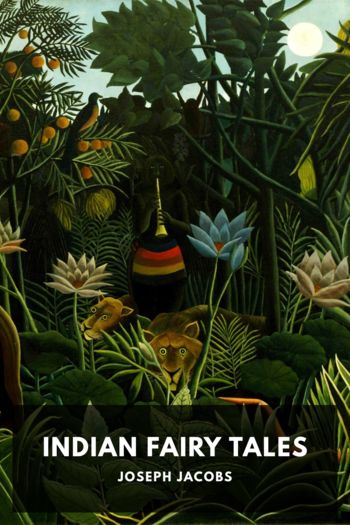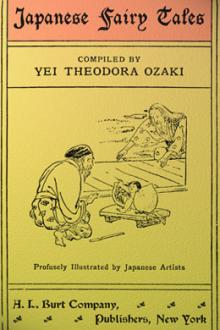Indian Fairy Tales by Joseph Jacobs (best books to read for students TXT) 📕

- Author: Joseph Jacobs
Book online «Indian Fairy Tales by Joseph Jacobs (best books to read for students TXT) 📕». Author Joseph Jacobs
Source.—The “Lola Jātaka,” Fausböll, No. 274, kindly translated and slightly abridged for this book by Mr. W. H. D. Rouse.
Remarks.—We began with an animal Jataka, and may appropriately finish with one which shows how effectively the writers of the Jatakas could represent animal folk, and how terribly moral they invariably were in their tales. I should perhaps add that the Bodhisat is not precisely the Buddha himself but a character which is on its way to becoming perfectly enlightened, and so may be called a future Buddha.
Endnotes“History of the Aesopic Fable,” the introductory volume to my edition of Caxton’s Fables of Esope (London, Nutt, 1889). ↩
An admirable and full account of this literature was given by M. A. Barth in Mélusine, t. IV No. 12, and t. V No. 1. See also Table I of Prof. Rhys-Davids’ Birth Stories. ↩
Finland boasts of 12,000, but most of these lie unprinted among the archives of the Helsingfors Literary Society. ↩
ColophonIndian Fairy Tales
was published in 1892 by
Joseph Jacobs.
Google
sponsored the production of this ebook for
Standard Ebooks.
It was produced by
Emma Sweeney,
and is based on a transcription produced in 2004 by
Sankar Viswanathan, Fritz Ohrenschall, Sania Ali Mirza, and The Online Distributed Proofreading Team
for
Project Gutenberg
and on digital scans available at the
Internet Archive.
The cover page is adapted from
The Dream,
a painting completed in 1910 by
Henri Rousseau.
The cover and title pages feature the
League Spartan and Sorts Mill Goudy
typefaces created in 2014 and 2009 by
The League of Moveable Type.
The first edition of this ebook was released on
March 25, 2021, 5:02 p.m.
You can check for updates to this ebook, view its revision history, or download it for different ereading systems at
standardebooks.org/ebooks/joseph-jacobs/indian-fairy-tales.
The volunteer-driven Standard Ebooks project relies on readers like you to submit typos, corrections, and other improvements. Anyone can contribute at standardebooks.org.
UncopyrightMay you do good and not evil.
May you find forgiveness for yourself and forgive others.
May you share freely, never taking more than you give.
Copyright pages exist to tell you can’t do something. Unlike them, this Uncopyright page exists to tell you, among other things, that the writing and artwork in this ebook are believed to be in the U.S. public domain. The U.S. public domain represents our collective cultural heritage, and items in it are free for anyone in the U.S. to do almost anything at all with, without having to get permission. Public domain items are free of copyright restrictions.
Copyright laws are different around the world. If you’re not located in the U.S., check with your local laws before using this ebook.
Non-authorship activities performed on public domain items—so-called “sweat of the brow” work—don’t create a new copyright. That means nobody can claim a new copyright on a public domain item for, among other things, work like digitization, markup, or typography. Regardless, to dispel any possible doubt on the copyright status of this ebook, Standard Ebooks L3C, its contributors, and the contributors to this ebook release this ebook under the terms in the CC0 1.0 Universal Public Domain Dedication, thus dedicating to the worldwide public domain all of the work they’ve done on this ebook, including but not limited to metadata, the titlepage, imprint, colophon, this Uncopyright, and any changes or enhancements to, or markup on, the original text and artwork. This dedication doesn’t change the copyright status of the underlying works, which, though believed to already be in the U.S. public domain, may not yet be in the public domain of other countries. We make this dedication in the interest of enriching our global cultural heritage, to promote free and libre culture around the world, and to give back to the unrestricted culture that has given all of us so much.





Comments (0)